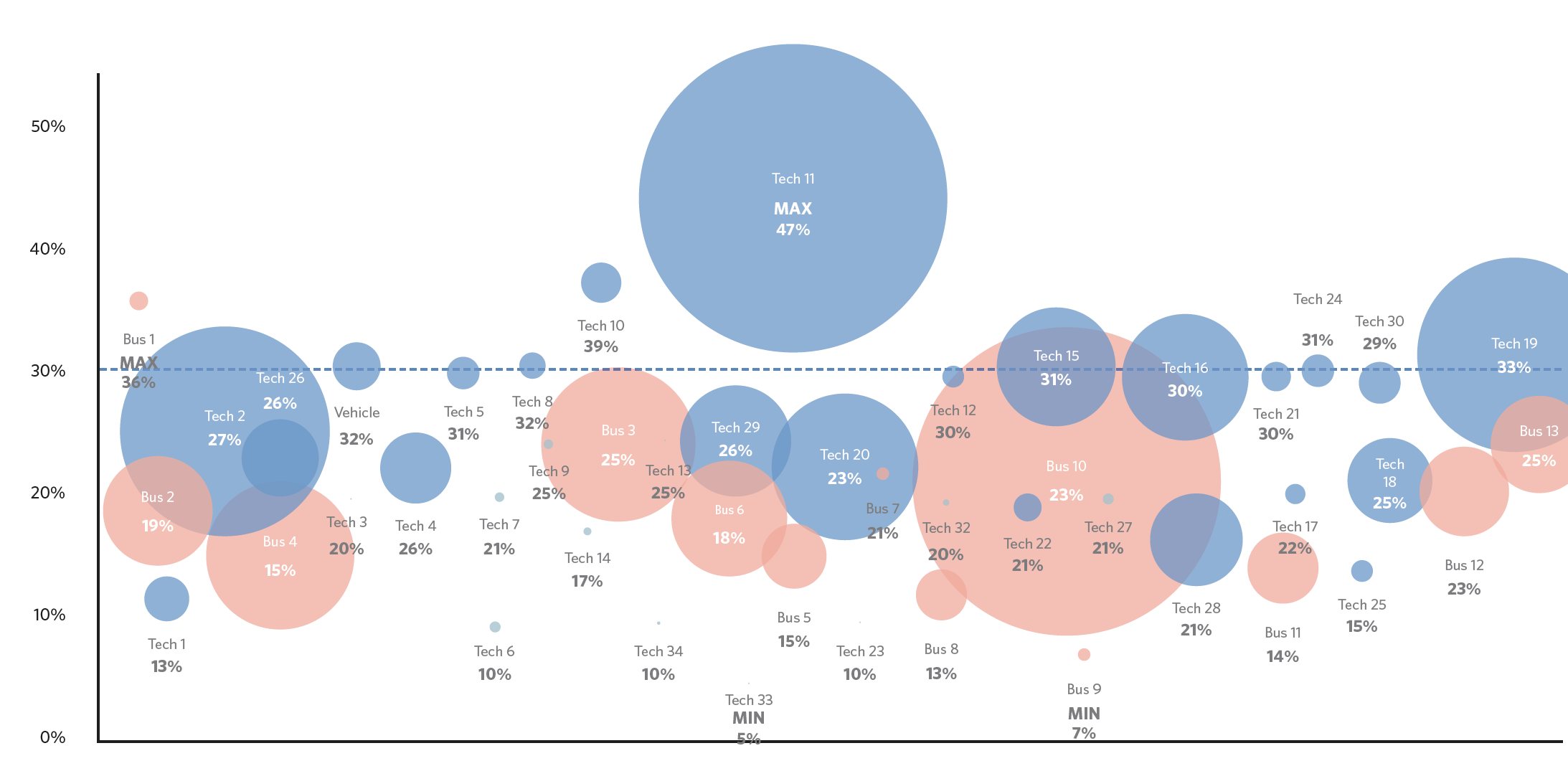Defining a unique culture and its impact on business
As an innovative technology company prepared to move into its own campus, they wanted to know more about how their employees viewed the company and its culture today. What did they want to keep? What needed to change?
I co-led a cross-functional team of 8 researchers as we collected both qualitative and quantitative data through a variety of methods. We had limited access to the site, so had to make difficult decisions about what data to collect and who to collect it from based on time and badging constraints.
After engaging 400 users over the course of 10 days on site, we presented a document to leadership. The outcomes from this project allowed leadership to prioritize the changes they wanted to make to their space, including deciding which departments would move first, what changes they could make in their current building to increase efficiency, and having an in-depth understanding of their culture that could be tied to business strategy.
Methods
Contextual inquiry
Semi-guided interviews
Survey
On site usability study
Research Questions
What do employees value about their space today? What would they change
What is inhibiting employees from being productive today?
How does job function affect the type of space employees need?
How is company culture perceived today? What do employees want it to be like in the future and how does it affect physical space?
Top Finding #1
It is cramped and crowded in the workstation area. The lack of personal space is a pain point, although most people feel as though they have enough desk space. People value being close to the people they work with… but not that close. Not everyone wants or needs an assigned workstation.
Each bubble represents a different cost center within business functions (red) and tech functions (blue). The size of the bubble represents the relative number of individual workstations. The center of each bubble aligns with the average occupancy for that cost center. Cost centers with very low occupancy rates might be good candidates for desk sharing, including Tech 6, Tech 1, and Business 8.
Top Finding #2
Today, employees feel as though there is no clear cultural identity for their company, which has been exacerbated by rapid growth. Sharing a space with another company contributes to feelings of isolation and being siloed because people sometimes don’t even know who works for which company.
Today, employees feel as though the overall sense of community could be stronger. It is important to people, but is performing neutrally. Employees are passionate about what they do and want to feel connected to their colleagues.
Top Finding #3
It feels as though there aren’t enough meeting rooms today because they are used constantly, but rarely to capacity. Today, meeting room availability dictates when people have meetings. The scheduling system does little to alleviate the issue.
This table shows various data about how conference rooms are used, including average occupancy, the average number of people observed, the maximum number of people, and group size necessity.
Group size necessity is when people use a room because they have to based on the size of their group. For example, a group of 11 must meet in a room with capacity size 13 or higher. The higher the percentage, the better!
Outcomes
Leadership reassessed which groups would be the first to move out of their current building based on the data about what people need because of their job function.
Reconsidering giving everyone an assigned desk has lessened the overall needs for square footage. Identifying which groups do not want or need assigned desks means that they can save space, and therefore money, as they look for a new building.
Branding and the ability to display work has become more of a focus in plans for the future space.
The organization is preparing to investigate further in how their employees envision their future space and how they want their culture to be manifested.


